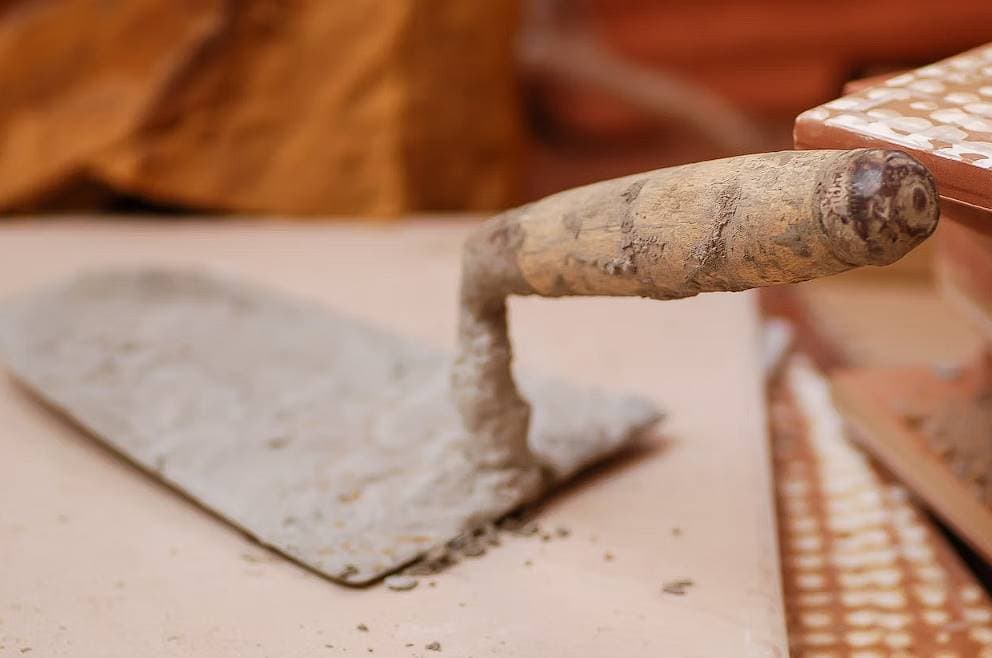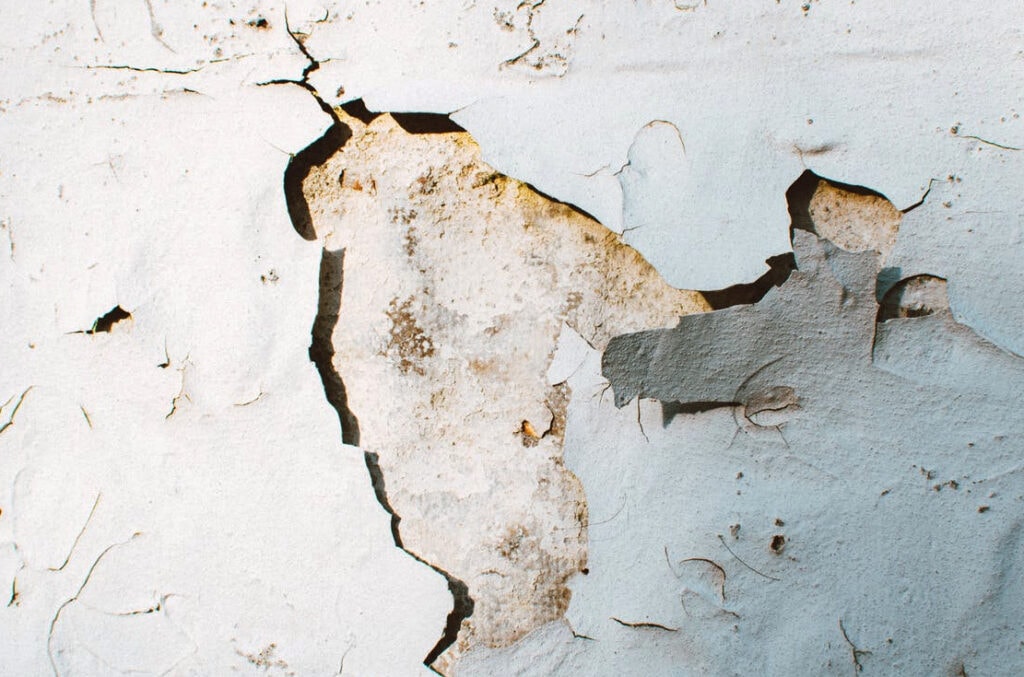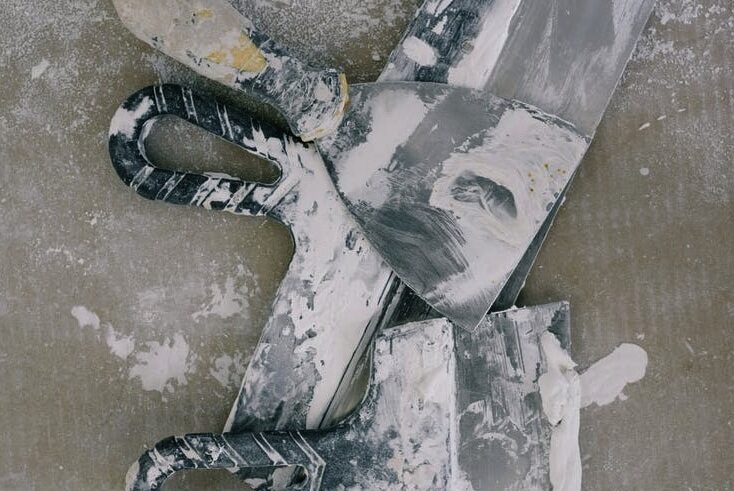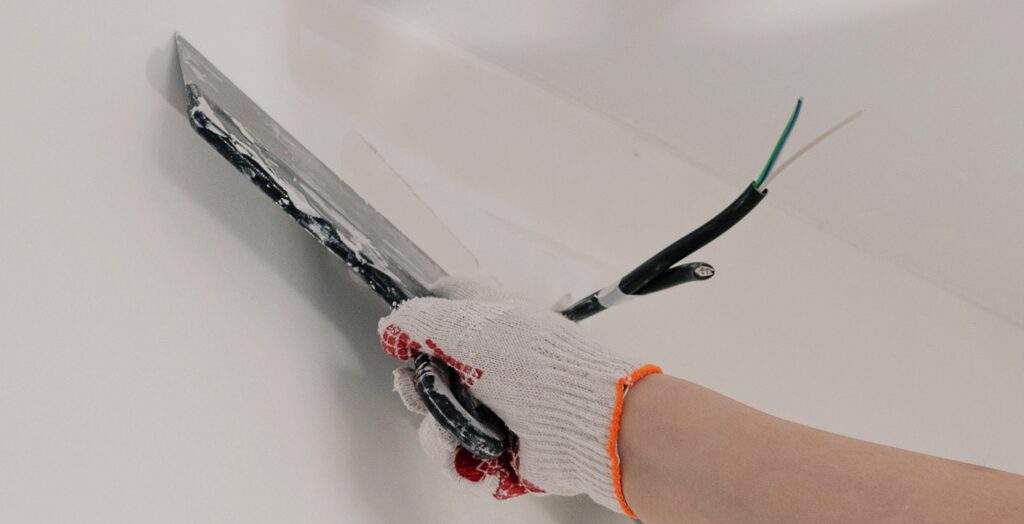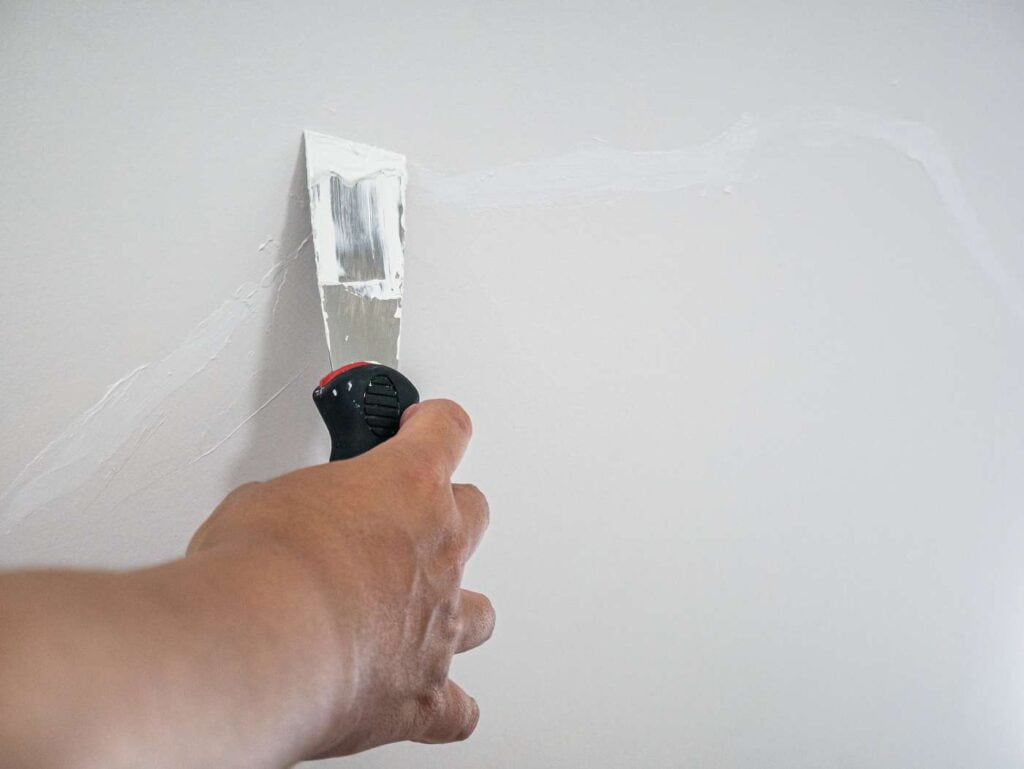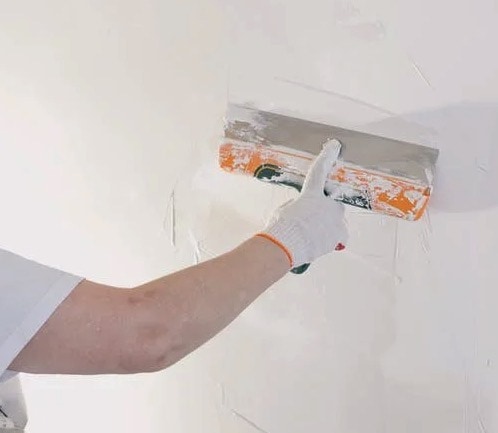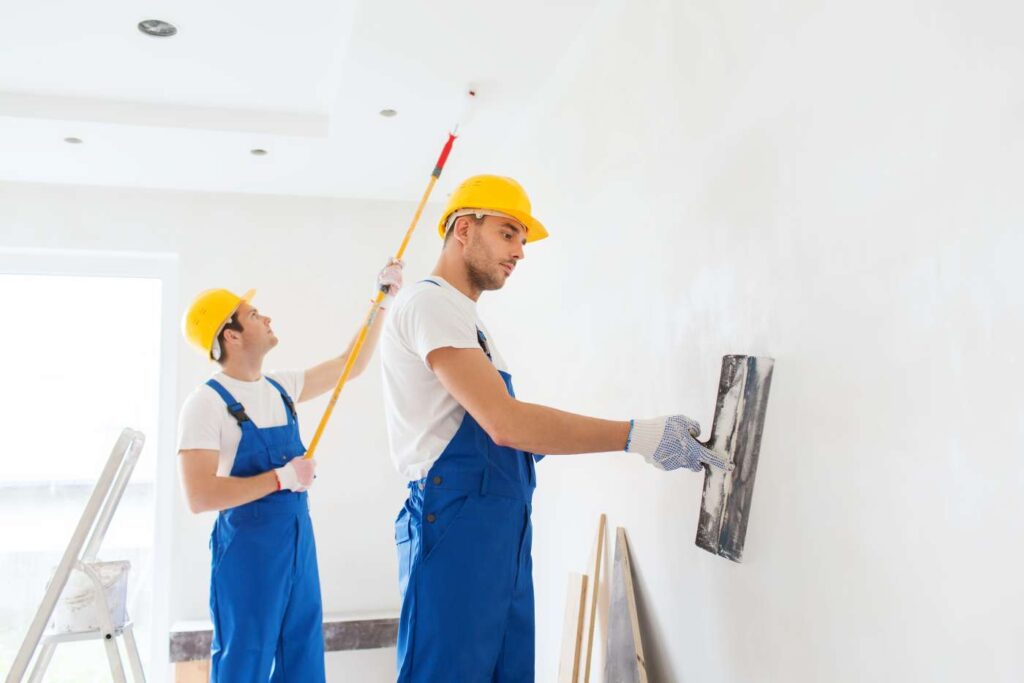Cement plastering is essential in building construction and renovation because it adds visual appeal and reinforces the structure. Cement plaster, a multipurpose and ubiquitous substance, is favoured by contractors and homeowners alike due to its many useful properties.
Cement plastering improves the look of walls and ceilings, but it also has functional advantages. In this piece, I'll discuss why cement plaster is a good choice for your next building job.
Putting cement plaster, often called stucco or render, into ceilings and walls to create a tough and smooth surface is called "cement plastering." Cement plastering's great strength and longevity ensure surfaces will hold up over time and across a wide range of weather conditions, making it a very desirable material.
Cement plaster also has high resistance to fire, which contributes to the safety and security of a building. Furthermore, this plastering method gives a great deal of flexibility, as it can be used to create a wide range of textures and finishes to complement a wide range of architectural styles.
Cement plastering is a practical, affordable, and aesthetically pleasing option for today's building projects, whether inside or outside.
Cement Plastering's Importance In Building
Because of its many positive effects on a building's quality, longevity, and appearance, cement plastering is an essential part of the construction process. This crucial method entails coating different building parts with a smooth & protective layer made from cement, sand, and mixed water.
Let's look into the history of cement plastering and how it influenced the development of today's building techniques.

Increasing The Durability Of Buildings
Cement plastering's capacity to strengthen the longevity & strength of buildings is one of the main reasons for its significance. Cement plaster provides a sturdy exterior that protects against weather, humidity, & impact when applied to a building. The lifespan of a structure can be greatly increased by using this protective coating to stop cracks and damage.
Increasing Structural Integrity
Plastering using cement improves the building's aesthetics and reinforces its structure. Cement plaster increases the structural integrity of the ceilings and walls, making them better able to withstand pressure and weight. This reinforcement of the structure is especially important in earthquake-prone regions.
Enhancing Fire Resistance
Plastering using cement has the added benefit of being fireproof, making it a desirable building material. The barrier created by the cement layer inhibits the spread of flames, protecting the building and the people inside. For the safety of its occupants and their valuables, this is an absolute necessity in any building.
Water Seepage And Dampness Prevention
The structural integrity of a structure might be compromised, and expensive repairs may be needed if water damage occurs. Cement plastering is highly effective at preventing water damage and mould growth. Plaster's ability to form a watertight barrier protects the structure against dampness-related problems like mould and rot.
Solution At A Low Cost
Cement plastering is just a long-term, cost-effective choice despite its many benefits. The longer lifespan and lower maintenance costs result in significant savings over time. Cement plastering is quite durable, so it requires fewer repairs and restorations over time, saving money for both home and business owners.
Creating A Smooth And Appealing Surface
With cement plastering, construction crews can complete projects with a polished look. Cement plastering offers various texture and pattern options, allowing designers and architects to express their creativity and produce visually appealing buildings.
Improving Energy Efficiency
Insulation from the cold is another benefit of cement plastering. It improves energy efficiency by controlling indoor temperatures and lowering heat loss through walls. This benefit, which aids in maintaining pleasant interior environments and minimises energy usage, is especially useful in areas with extreme weather conditions.
Practices Of Sustainable Construction
Cement plastering is a green alternative for construction materials. Using cement as a foundational material reduces the demand for scarce, nonrenewable materials. Cement plastering's thermal insulation capabilities also improve buildings' total energy efficiency, which has a positive effect on the planet.
Plastering Process Simplified
Construction workers benefit from the ease with which cement plastering can be applied. Its malleability facilitates quicker application, cutting labour and time spent on the job. Both builders and homeowners can benefit from this benefit, as it reduces the time and money spent on the project.
Compatibility With Different Building Materials
Plastering with cement is harmonious with many architectural components and can be used with other building materials and finishes. It goes well with other finishes like paint, tiles, & cladding, so you may be creative to make the building look even better.
The construction industry places a high value on cement plastering because of its many uses and advantages. Cement plastering greatly contributes towards the longevity & safety of structures by increasing their durability and strength and providing fire resistance and water protection.
Environmental friendliness, thermal insulation, and simplicity of application all contribute to its widespread use in today's building projects. Cement plastering is an important method because it contributes to the durability and attractiveness of buildings.
Cement Plastering's Main Advantages: Durability And Strength
Durability & strength are of utmost importance when developing a long-lasting and sturdy construction. These primary features make it so the building can endure the passage of time and a wide range of environmental stresses.
Plastering with cement is a common building method because it adds strength and durability to structures. Let's examine why cement plastering is so popular in the building business and how it improves durability and stability.
- Protection Against External Elements: Plastering with cement provides an extra layer of defence for structures, protecting them from the weather. It solidifies into a thick coating, protecting the underlying structure from elements like sunlight and extreme heat or cold. The cement plaster covering protects the building from impact and physical stress, increasing its lifespan.
- Resistance to Cracking and Settling: With time, most buildings have problems like cracking and settling, especially in areas with unstable soil or frequent earthquakes. Plastering walls and ceilings with cement make them more sturdy and less prone to cracking & settling. This ensures the building's structural integrity and lowers the frequency of needed repairs and maintenance.
- Reinforcement of Building Components: Plastering with cement strengthens a wide range of building materials, from bricks and concrete blocks to more flimsy ones. Cement plaster increases a structure's durability by clinging tenaciously to the surface, making it less prone to deformation and collapse.
- Enhanced Load-Bearing Capacity: Wall and ceiling load-bearing capability is greatly improved when cement plaster is applied. This is paramount in multi-story buildings and other constructions that must bear substantial weight. The building's load-bearing capacity has been increased, so it can safely support more weight.
- Longevity of Finishes: Cement plastering not only affects the skeleton of a building, but it also helps the external and interior surfaces remain longer. Plaster's uniform and firm surface make it easier to apply and maintain finishes like paint and wallpaper, extending their useful life and minimising the frequency with which they must be redone.
- Protection Against Corrosion and Rust: Corrosion & rust, especially in metal, can be a problem for structures in coastal or wet areas. Plastering with cement creates a moisture barrier that stops water from seeping into the building and corroding the metal components. This shielding lessens the possibility of corrosion and lengthens the structure's life.
- Resistance to Fire and Heat: Cement plastering has been used for centuries because of its fireproof capabilities, which are essential in modern construction. As a fire retardant, the cement coating buys residents precious time to flee the building safely. Both business and residential buildings can benefit greatly from this fire safety feature.
- Low Maintenance Requirements: Cement plastering is long-lasting and requires minimal upkeep for construction. The increased durability of the surface means fewer maintenance checks and patch jobs down the road. This perk results in savings for the building's proprietors and guarantees the structure's pristine condition for a longer period.
- Preservation of Aesthetic Appeal: Cement plastering not only protects against moisture and mould but also improves the look of the structure. Plaster gives the building a sleek and aesthetically pleasing finish, which is appreciated by both residents and guests.
- Sustainable Building Practice: Cement is the main component in cement plastering, and it is both inexpensive and safe for the environment. Compared to other building materials, the environmental impact of its manufacture is minimal. Hence, cement plastering is consistent with green building methods and lessens the project's overall carbon footprint.
The longevity and security of buildings depend critically on their durability and strength. Plastering with cement has several practical applications within the construction industry, including weatherproofing, increased load-bearing capacity, and less susceptibility to fire and corrosion. With its many advantages, such as minimal upkeep and visual beauty.
Cement Plastering's Cost-Effectiveness: Saving On Maintenance And Repair Costs
The importance of efficiency in terms of cost is well-acknowledged in the building industry. Using sustainable building materials and methods can help save money in the long run by reducing the need for costly repairs and upkeep.
Because of its long lifespan and minimal upkeep requirements, cement plastering is a practical and affordable option. Let's examine how cement plastering can reduce your building's yearly maintenance and repair costs.
- Enhanced Durability and Longevity: Buildings plastered with cement are far more sturdy and long-lasting. Cement plaster provides a durable and protective covering, a barrier against environmental hazards like weather, ultraviolet radiation, & physical impact. This increased toughness lessens the need for maintenance over the structure's lifetime.
- Low-Maintenance Surface: Plastering using cement produces a smooth, nonporous surface that needs nothing in the way of upkeep. Cement plastering can look great for a long time with just the odd touch-up and cleaning, whereas other classic treatments may need to be repainted or refinished more often.
- Resisting Cracks and Damages: In areas where earthquakes and other forms of extreme weather are widespread, cracks and other forms of damage are a typical problem for buildings. It is less likely that cracks will appear as a result of structural settling or motion because cement plastering is both robust and flexible.
- Seamless Repairs: Cement plastering enables invisible repairs in the event of small damage like dents or scratches. There's no need for pricey replacements or significant repairs because the damaged area may be patched and painted to match the rest of the plaster.
- Protecting the Underlying Structure: Cement plastering protects the underlying structure and the building from the elements. Cement plastering protects the building's structure and materials against the effects of moisture infiltration and corrosion by sealing off these sources of damage.
- Reducing Water-Related Maintenance: Buildings are vulnerable to water damage, leading to expensive repairs and structural difficulties. The moisture-reducing benefits of cement plastering include a decreased likelihood of mould and rot formation due to water seepage and dampness.
- Minimising Restoration Expenses: Repairing substantial damage to a structure over time might make it too expensive to return to its former glory. Cement plastering's resistance to wear and tear means less money spent on costly restorations in the long run for the building's owners.
- Long-Term Savings for Property Owners: Cement plastering offers property owners significant cost advantages over the long run. Lower running expenses over time due to fewer repairs and maintenance needs make it a good long-term investment for homes and businesses alike.
- Avoiding Frequent Repainting: Cement plastering's long-lasting surface keeps its colour and texture long, compared to other finishes that could require frequent repainting to preserve their appearance. Property owners can avoid the costs of having to repaint their buildings constantly.
- Sustainable Investment: Plastering with cement is a long-lasting investment for homeowners. Because of how long it lasts, less energy and materials are wasted on constant maintenance and repairs, making this a greener option for buildings.
Cement plastering's value is demonstrated by the money it saves you in the long run on repairs and upkeep. Cement plastering is a dependable and cost-effective option for construction projects because of its long lifespan, low maintenance requirements, and resilience to damage. Cement plastering has proven to be a long-lasting and cost-effective investment for homes and businesses by reducing maintenance expenses and the need for frequent painting.
Fire Protection: Cement Plastering As A Trustworthy Fire Barrier
As a result, builders are always looking for new and improved strategies to increase a building's fire resistance. Plastering with cement shows promise as a reliable method for reducing the potential for fire to spread within buildings.
Cement plastering acts as just a fire barrier, drastically lowering the risk and severity of fire damage. Let's look at how cement plastering protects against fire and improves a building's security.
- Fire Barrier Properties: Because of its composition, cement plastering provides excellent protection against fire. Cement plaster's core ingredients—cement, sand, and water—form a dense, fireproof coating. When applied to floors, walls, and ceilings, this coating acts as a barrier that slows the rate at which fire can spread.
- Slowing Down Fire Spread: Cement plastering's inherent fire resistance is crucial in preventing rapid fire spread in the case of a fire. Firefighters will have more time to arrive and manage the blaze before the entire structure is destroyed, and residents will have more time to leave safely.
- Protecting the Structural Integrity: Cement plastering serves as both a fire barrier and a structural protector in the event of a fire. Traditional building materials, including wood and drywall, can become unstable when exposed to the high temperatures generated by a fire. Cement plastering, on the other hand, holds up even under extreme heat and provides crucial structural support.
- Preventing Fire Penetration: When a surface is plastered with cement, it becomes one continuous piece with no cracks or crevices that a fire could use to spread. This effectively confines the fire to its point of origin by blocking off any potential routes of spread through unseen wall cavities or air ducts.
- Complementing Fire Safety Measures: Plastering with cement adds another layer of fire protection to an otherwise well-designed structure. Cement plastering improves the fire safety of the building when used in conjunction with other fire safety measures such as fire doors, fire extinguishers, & smoke alarms.
- Meeting Fire Safety Regulations: Many types of buildings are required to meet varying degrees of fire resistance standards by various rules and laws. Cement plastering provides a reliable fire barrier, allowing construction crews to meet these standards and avoid fines and other penalties.
- Protecting Occupants and Contents: Fires are dangerous to the structure itself, but they also risk the lives of the people inside. Cement plastering provides an important buffer against harm, buying precious minutes that can be used to get people to safety. It also aids in protecting the building's precious contents and valuables.
- Suitable for Various Building Types: Plastering with cement is a flexible option used in various settings, from homes to offices to factories. Because of its versatility, it is an excellent option for fireproofing structures of varying ages and functions.
- Cost-Effective Fire Safety Measure: Investment in fire-resistant measures was necessary in light of the potential destruction caused by fire occurrences. Regarding fire prevention measures, cement plastering is an economical option that provides long-term security and peace of mind without breaking the bank.
- Enhancing Public Safety: Cement plastering aids public safety by shielding the building's occupants from harm. It makes neighbourhoods and communities safer by decreasing the likelihood of a fire spreading to nearby buildings and homes.
Because of its fireproof qualities, cement plastering is key in making buildings safer for occupants. It serves as an effective fire barrier, halting the spread of fire while keeping the building's structure safe. Cement plastering provides thorough fire protection for many buildings since it complies with fire safety rules and complements other safety measures.
Investing in cement plastering as nothing more than a fire-resistant solution is a wise decision that protects residents, maintains the property, and boosts community security in the event of a fire.

Exploring The Flexibility Of Cement Plastering Variety In Application
Having access to a wide range of uses for building materials is crucial. The flexibility of the material's application and surface makes building quicker and more cost-effective and opens up new avenues of design.
Cement plastering is an adaptable building method because of its malleability and simplicity of application. Let's investigate the various construction applications that cement plastering serves as an example of.
- Suitable for Various Surfaces: Because of its adaptability, cement plastering is appropriate for indoor and outdoor applications. Cement plastering can be done without gaps or unevenness, making it ideal for covering brickwork, concrete blocks, and other irregular surfaces.
- Interior and Exterior Use Cases: Cement plastering can be utilised for both internal and outdoor purposes due to its versatility. Cement plastering is a tried and true method that may be used anywhere for a uniform look and feel, from the inside walls and ceilings to the external walls and ceilings.
- Creating Architectural Details: The versatility of cement plastering allows for the incorporation of complex design elements. Cement plastering's malleability allows for its use in various ornamental mouldings and decorative pattern applications, elevating the structure's visual appeal.
- Customisable Textures: Cement plastering's adaptability in terms of texture is one of its main selling points. A range of finishes, from smooth to sanded to stippled, is available to architects and designers. The variety of texture options available here provides artistic licence and the possibility of finding a perfect fit with the building's overall aesthetic.
- Seamless Repairs and Patchwork: Cement plastering allows for unnoticeable fixes and patching. Plaster is easily fixed and blended with the surrounding plaster to create a seamless and consistent surface in the event of any minor damage or adjustments.
- Compatible with Various Finishes: Plastering with cement is easy to work with because it complements various paints and finishes. It goes well with other surface treatments, including paint, tiles, panelling, and much more, so it may be used in countless ways to improve the building's aesthetic.
- Easily Integrates with Construction Elements: Cement plastering can be used with many different building components because of its adaptability. It's aesthetically unobtrusive and can be used around doors, windows, and other architectural details.
- Ability to Create Curves: Cement plastering, in contrast to more rigid materials, permits the production of curves & rounded surfaces. With this skill, architects can create one-of-a-kind, eye-catching features that give their structure personality.
- Perfect for Renovation Projects: When fixing things up, cement plastering is hard to beat. Because it can be applied to many different surfaces, it is ideal for giving historic structures a facelift without destroying their unique character.
- Fast Application Process: Cement plastering allows for rapid and effective building because of its versatility and ease of use. Because of the time and money savings associated with this method, it is becoming increasingly popular among construction companies.
Cement plastering stands out as a multipurpose building method because of its flexibility in accommodating different substrates, aesthetic goals, and architectural particulars.
Cement plastering allows architects, designers, & builders to express their individuality and creativity through its flawless application over interior and external surfaces and ability to produce individualised textures.
It is a popular option for contemporary building projects since it blends well with various finishes and is simple to incorporate into other parts of the structure.
Conclusion
Cement plastering is an important part of building construction and renovation. It makes buildings last longer, improves their structural integrity, makes them less likely to catch on fire, stops water seepage and dampness, and is a cost-effective option. Its versatility means that it can have different textures and finishes to match different building styles. This makes it an attractive and useful choice for builders and residents alike.
Plastering with cement is popular with both contractors and individuals because it can be used for many different things and gives a smooth, hard surface. Its strength and durability make it a good material for surfaces that need to last over time and in different weather situations. Also, cement plastering can't catch fire, which keeps fires from spreading and protects the building and its people.
Plastering with cement is also a sustainable building material because it lowers the need for scarce, nonrenewable materials and makes the building use less energy overall. Cement plastering is easy to use because it can be shaped in different ways. This makes it easier to use and saves builders and users time and money. Overall, cement plastering is a flexible and cost-effective choice for building projects. It can be used in both residential and business settings and is both strong and attractive.
Cement plastering is a popular way to build because it is strong and lasts a long time, making things last longer and be safer. It works well with different building materials and styles, making it a great choice for architects and builders. Cement plastering has many benefits, such as protection from the outside elements, resistance to cracking and settling, reinforcement of building parts, increased load-bearing capacity, long-lasting finishes, protection from corrosion and rust, resistance to fire and heat, low maintenance needs, keeping the building's good looks, and being environmentally friendly.
Cement sealing is cheap and good for the environment because it has less of an effect on the environment than other building materials. It works with green building methods and lowers the carbon footprint of the whole project. Cement plastering makes sure that buildings last and are safe by mixing cement with other building materials and finishes. This keeps the buildings' structures strong and reduces the need for repairs and upkeep.
Plastering with cement is a flexible building method because it is easy to shape and apply. It works on different surfaces, so you can use it both inside and outside. Cement plastering makes it possible to use complicated design elements, add architectural details, and create different textures. It also lets fixes and patchwork go together smoothly, works with different finishes, and is easy to put together with other building parts. Cement plastering makes it possible to make curves and rounded surfaces. This lets builders make unique details that give their buildings character. It is great for remodelling projects because it can be used on many different surfaces. It gives old buildings a new look without changing their original style. Cement plastering is easy to use and goes on quickly, which saves time and money and makes building go faster. Overall, cement plastering is a popular choice for modern building projects because it can be used in many different ways, is easy to work with, and lets people show their creativity and individualism.
Content Summary
- Cement plastering enhances building aesthetics and structural reinforcement.
- Contractors and homeowners favour cement plaster for its useful properties.
- Cement plaster improves the appearance and offers functional benefits.
- Cement plastering creates a tough, smooth surface on walls and ceilings.
- Its strength and durability make it ideal for various weather conditions.
- Cement plaster is fire-resistant, ensuring building safety.
- It allows for diverse textures and finishes to suit architectural styles.
- Cement plastering is practical, affordable, and visually appealing.
- Cement plaster adds strength and longevity to buildings.
- It involves coating parts with a protective layer of cement, sand, and water.
- Cement plaster increases a structure's lifespan and durability.
- It enhances structural integrity and safety against earthquakes.
- Fire resistance contributes to building safety.
- Cement plaster prevents water damage and mould growth.
- It's a cost-effective choice with long-term benefits.
- Cement plastering provides a polished appearance to projects.
- It improves energy efficiency by controlling indoor temperatures.
- Cement plaster supports sustainable construction practices.
- Its malleability speeds up construction work.
- Cement plaster complements various architectural components.
- Cement plastering contributes to building longevity.
- It offers protection against weather elements.
- Cement plaster resists cracking and settling.
- It reinforces the building's structure and load-bearing capacity.
- Cement plaster enhances fire resistance and prevents corrosion.
- It prevents water seepage and dampness.
- Cement plastering is cost-effective and sustainable.
- It creates smooth, aesthetically pleasing surfaces.
- It improves energy efficiency and reduces carbon footprint.
- Cement plastering's flexibility speeds up construction.
- It's suitable for various surfaces, indoor and outdoor.
- Cement plastering allows for intricate architectural details.
- Different textures can be achieved with cement plaster.
- It seamlessly repairs and blends with existing plaster.
- Cement plastering complements various finishes.
- It integrates well with different construction elements.
- Curved surfaces can be created with cement plaster.
- It's ideal for renovation without compromising character.
- Cement plastering is fast and efficient in application.
- It accommodates various substrates and aesthetic goals.
- Cement plastering enhances building aesthetics and structure.
- It creates a tough, smooth surface on walls and ceilings.
- It's favoured for its strength and durability.
- Cement plaster is fire-resistant, contributing to safety.
- Versatile textures and finishes suit architectural styles.
- It's practical, affordable, and visually appealing.
- Cement plaster reinforces structures and increases longevity.
- It enhances structural integrity and safety.
- Fire resistance and water protection are their advantages.
- Sustainability and malleability make cement plastering popular.
Frequently Asked Questions
Yes, cement plastering is well-suited for both interior and exterior walls. It provides added protection against weather elements and enhances the appearance of the building's exterior.
With proper application and maintenance, cement plastering can last for several decades, ensuring long-term durability and strength for the structure.
Yes, cement plastering can be applied to old buildings to rejuvenate their appearance and enhance their longevity.
Yes, cement plastering provides thermal insulation, contributing to better energy efficiency by reducing heat transfer through walls.
Cement plastering is considered eco-friendly due to its low environmental impact and energy-efficient properties, making it a sustainable building practice.
